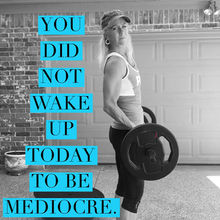5 Things Injured Runners Can Do for Cardio
- Mary Timoney Ironman University Certified Coach
- Mar 10, 2024
- 3 min read
5 Things Injured Runners Can Do for Cardio
As Ironman athletes, staying in top form is crucial, but what happens when injury throws a wrench into your training ? Don't fret; there are still plenty of ways to maintain your cardiovascular fitness and keep those endurance gains coming, even without pounding the pavement. Here are five effective non-weight bearing cardio options to keep you moving forward toward race day!
1.Spinner Bike Run Workouts: If you're sidelined from running due to injury, stand on a Spinner bike for a low-impact cardio session. With the ability to adjust resistance levels, you can simulate rolling hills, tempo runs, or endurance-paced rides to keep your heart rate up and your legs moving without the strain of running. I like standing run on the bike because it mimics the movement of leg turnover in running without the impact of a foot strike. You can still track your cadence and heart rate, allowing you to track your effort and progress effectively.
2.Pool Running: Take your workout to the pool and try aquatic running as a non-weight bearing alternative. The buoyancy of the water reduces impact on your joints while still providing a challenging cardio workout. Simply strap on a flotation belt and "run" in the water, focusing on maintaining proper form and engaging your leg muscles with each stride. You can use a clock for timed intervals, or waterproof ear pods with your favorite playlist or tabata workout.

3.Alter G Anti-Gravity Treadmill: If you have access to an Alter G machine, consider it your secret weapon for maintaining running fitness while injured. This innovative treadmill uses differential air pressure to reduce your effective body weight, allowing you to run with minimal impact on your joints. By adjusting the level of support, you can gradually reintroduce running into your routine and accelerate the recovery process. Usually a nearby University with an Athletics program will have one and may give access to local athletes.
4.Elliptical Trainer: The elliptical trainer is another excellent option for non-weight bearing cardio that mimics the motion of running without the impact. By adjusting the incline and resistance settings, you can tailor your workout and vary the intensity to match your training goals. Plus, many elliptical machines offer built-in workout programs to keep you motivated and challenged. I’ve trained many iron distance athletes with injuries, and a few of them with only elliptical for cardio to save wear and tear on a knee or ankle.
5.Street Strider: For a fun and dynamic cardio workout, hit the pavement with a Street Strider. This is definitely an investment, but for all the athletes I have known who use this, it can be a game changer for your training. Whether you’re looking for endurance, sprinting, or climbing hills, the Street Strider delivers the feeling of power and performance while providing an effective cardiovascular workout. I've had several athletes with knee issues use this piece of equipment for endurance training and go on to complete a full iron distance race. It's a great way to enjoy the outdoors and add variety to your training routine while being kind to your body. Here’s the link to check out a the Street Strider: https://www.streetstrider.com/products/streetstrider8s

While you are rehabbing your injury, work on mobility and flexibility of the other areas of your lower body such as hip flexors, hips adductors, abductors, glutes, hamstrings, and quads. Strengthening these areas and keeping them mobile can enhance your recovery.
Injured or not, there's no reason to let your training grind to a halt. With these non-weight bearing cardio options, you can stay on track with your Ironman goals while giving your body the time it needs to heal. So lace up, dive in, or hop on—whatever it takes to keep moving forward toward race day success!
Related Articles: https://www.marinewifemultisport.com/single-post/5-reasons-you-keep-getting-injured-and-how-to-break-the-cycle
Have you thought about hiring a coach for your next iron distance race? Let’s chat! Click the purple button below, fill out the short form, and let’s talk about your race goals for 2024!
Mary Timoney
Ironman University Certified Coach
USA Triathlon Coach
ACSM Trainer



































Comments